 W
WAdolph Francis Alphonse Bandelier was a Swiss-born American archaeologist who particularly explored the indigenous cultures of the American Southwest, Mexico, and South America. He immigrated to the United States with his family as a youth and made his life there, abandoning the family business to study in the new fields of archeology and ethnology.
 W
WClaude-François Baudez was a French Mayanist, archaeologist and iconologist. He was honorary director of research at the French National Centre for Scientific Research, a specialist on the rituals and beliefs of Mesoamerica, particularly of the Maya civilisation.
 W
WRichard E. Blanton is an American anthropologist, archaeologist, and academic. He is most renowned for his archaeological field and theoretical research into the development of civilizations in pre-Columbian Mesoamerica, particularly those from the central Mexican plateau and Valley of Oaxaca regions. Blanton taught at Rice University and Hunter College of the City University of New York before joining the faculty at Purdue University in 1976. He is currently Professor Emeritus of Anthropology at Purdue's College of Liberal Arts.
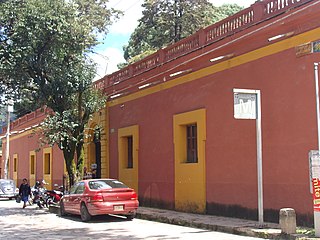 W
WFrans Blom was a Danish explorer and archaeologist. He was most associated with his research of the Maya civilization of Mexico and Central America.
 W
WJohn Savage Bolles was an American architect.
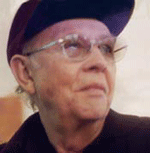 W
WRobert E. Lee Chadwick was an American anthropologist and archeologist, primarily known for his contributions to the Handbook of Middle American Indians.
 W
WClaude-Joseph Désiré Charnay was a French traveller and archaeologist notable both for his explorations of Mexico and Central America, and for the pioneering use of photography to document his discoveries.
 W
WJuan Galindo was an Anglo-Irish political activist and military and administrative officer under the Liberal government of the Federal Republic of Central America. He represented the government in a diplomatic mission to the United States and England. His duties in Central America allowed him to explore the region and examine Maya ruins. The reports on his findings earned him recognition as early pioneer of Maya archaeology.
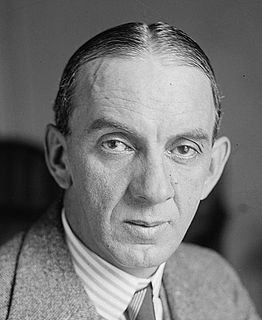 W
WManuel Gamio (1883–1960) was a Mexican anthropologist, archaeologist, sociologist, and a leader of the indigenismo movement. Although he rejected full sovereignty for indigenous communities in Mexico, he argued that their self-governing organizations, such as tribal governments, municipal organizations, and elected community leaders should be recognized and respected. He is often considered as the father of modern anthropological studies in Mexico. He devised a well-known system for classifying the hunter-gatherers of Central America.
 W
WThomas William Francis Gann was a medical doctor by profession, but is best remembered for his work as an amateur archaeologist exploring ruins of the Maya civilization.
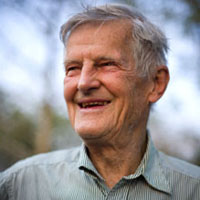 W
WIan James Alastair Graham OBE was a British Mayanist whose explorations of Maya ruins in the jungles of Mexico, Guatemala, and Belize helped establish the Corpus of Maya Hieroglyphic Inscriptions published by the Peabody Museum of Harvard University. Among his related works is a biography of an early predecessor, the 19th-century British Maya explorer Alfred Maudslay.
 W
WRichard D. Hansen is an American archaeologist and adjunct professor of anthropology at the University of Utah
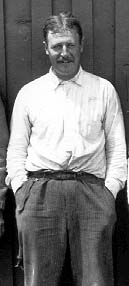 W
WAlfred Vincent Kidder was an American archaeologist considered the foremost of the southwestern United States and Mesoamerica during the first half of the 20th century. He saw a disciplined system of archaeological techniques as a means to extend the principles of anthropology into the prehistoric past and so was the originator of the first comprehensive, systematic approach to North American archaeology.
 W
WEdward Barna Kurjack was a Mayan anthropologist who was known for his contributions to the study of Mayan settlement patterns and society.
 W
WAntonio de León y Gama (1735–1802) was a Mexican astronomer, anthropologist and writer. When in 1790 the Aztec calendar stone was discovered buried under the main square of Mexico City, he published an essay about it, Descripción histórica y cronológica de las dos piedras que con ocasión del nuevo empedrado que se está formando en la plaza principal de México, se hallaron en ella el año de 1790 explaining the functioning of aztec calendars.
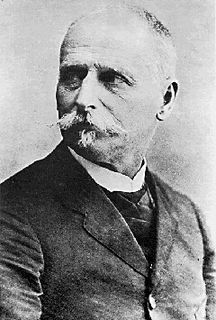 W
WTeobert Maler, later Teoberto was an explorer who devoted his energies to documenting the ruins of the Maya civilization.
 W
WMarion Stirling Pugh was an American archaeologist. She is known for her archaeological expeditions to Tres Zapotes and other sites in Southern Mexico in the 1940s, conducted alongside her husband Matthew Stirling, which according to National Geographic "essentially rewrote Mesoamerican history". Her discovery of a date in the Long Count calendar, corresponding to 32 BCE, on a stela from Tres Zapotes, helped establish the antiquity of the Olmec civilization for the first time. She also served as the president of the Washington Textile Museum and the Society of Woman Geographers twice.
 W
WJohn Alden Mason was an American archaeological anthropologist and linguist.
 W
WEduardo Matos Moctezuma is a Mexican archaeologist. From 1978 to 1982 he directed excavations at the Templo Mayor, the remains of a major Aztec pyramid in central Mexico City.
 W
WAlfred Percival Maudslay was a British diplomat, explorer and archaeologist. He was one of the first Europeans to study Maya ruins. He also fully translated and annotated the best version of Bernal Díaz del Castillo's Historia verdadera de la conquista de la Nueva España from the only original manuscript in 1908 for the Hakluyt Society, which was abridged in 1928.
 W
WSylvanus Griswold Morley was an American archaeologist, epigrapher, and Mayanist scholar who made significant contributions toward the study of the pre-Columbian Maya civilization in the early 20th century.
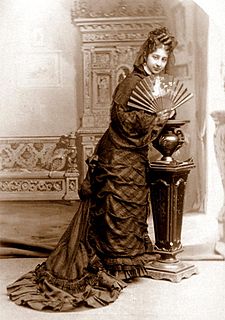 W
WZelia Maria Magdalena Nuttall was an American archaeologist and anthropologist specialised in pre-Aztec Mexican cultures and pre-Columbian manuscripts. She discovered two forgotten manuscripts of this type in private collections, one of them being the Codex Zouche-Nuttall. She was one of the first to identify and recognise artefacts dating back to the pre-Aztec period.
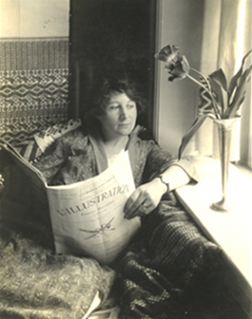 W
WDorothy Popenoe was an English archaeologist and botanist.
 W
WTat’yana Avenirovna Proskuriakova was a Russian-American Mayanist scholar and archaeologist who contributed significantly to the deciphering of Maya hieroglyphs, the writing system of the pre-Columbian Maya civilization of Mesoamerica. Tatyana Proskuriakova moved to the USA with her parents in 1916. In 1924, she accepted American citizenship. She graduated from the College of Architecture in Pennsylvania (1930). In 1936-1937, she took part in two seasons of archaeological expedition to Piedras Negras (Guatemala). In 1939, she made scientific trips to Copan and Chichen Itza. In 1940-1958, she was a staff member of the Carnegie Institute and developed methods of dating ancient Mayan monuments based on the peculiarities of the fine arts style. In 1950-1955, she worked at the excavations of Mayapan. In 1958, Proskouriakoff moved to the Peabody Museum at Harvard University, where she worked until her retirement in 1977. In her final years of life, she suffered from Alzheimer's disease. The most significant scientific contribution of Tatiana Proskouriakoff is considered to be the consistent application of the structural method to Mayan inscriptions of the classical period, as a result of which she proved that historical events were recorded on the monuments. Publications about new method application have been published since 1960. In 1967, she wrote the preface for the English translation of Yuri Knorozov's monograph "Writing of Maya Indians". However, she did not try to voice Maya texts, although she recognized the method of deciphering the written language.
 W
WFrederic Ward Putnam was an American anthropologist.
 W
WAlberto Ruz Lhuillier was a Mexican archaeologist. He specialized in pre-Columbian Mesoamerican archaeology and is well known for leading the National Institute of Anthropology and History (INAH) excavations at the Maya site of Palenque, where he found the tomb of the Maya ruler, Pakal. Ruz Lhuillier is sometimes referred to as the "Hitchcock of Archaeology".
 W
WNicholas J. Saunders is a British academic archaeologist and anthropologist. He was educated at the universities of Sheffield, Cambridge, and Southampton. He has held teaching and research positions at the National Autonomous University of Mexico, the University of the West Indies, Dumbarton Oaks, Washington D.C., and at University College London, where he was Reader in Material Culture, and undertook a major British Academy sponsored investigation into the material culture anthropology of the First World War (1998–2004). As of 2014 Saunders is Professor in the Department of Archaeology and Anthropology at the University of Bristol, where he is responsible for the MA programmes in historical archaeology and conflict archaeology. He is a prominent contributor to the nascent field of conflict archaeology, and has authored and edited numerous academic publications in the field. In addition to his research specialising in the anthropology of 20th-century conflicts and the archaeology of World War I theatres in Belgium, France and the Middle East, Saunders has also conducted extensive fieldwork and research in pre-Columbian and historical archaeology of the Americas. He has been involved with major museum exhibitions in London, Ypres (Belgium), Tübingen (Germany), and at the Centre Pompidou-Metz (France). Saunders has investigated and published on material cultures and landscapes of Mesoamerica, South America, and the Caribbean. His most recent research has been on the aesthetics of brilliance and colour in indigenous Amerindian symbolism, an extensive survey investigation of the Nazca Lines in Peru, and the anthropological archaeology of twentieth-century conflict and its legacies along the Soca (Isonzo) Front on the Slovenian-Italian border.
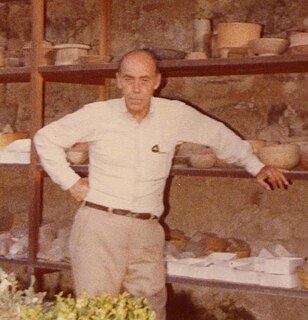 W
WEdwin M. Shook was an American archaeologist and Mayanist scholar, best known for his extensive field work and publications on pre-Columbian Maya civilization sites.
 W
WHerbert Joseph Spinden (1879–1967) was an American anthropologist, archeologist and art historian who specialized in the study of Native American cultures of the US and Mesoamerica. In 1936 he was president of the American Anthropological Association. He was born in Huron, South Dakota. He obtained his Ph.D. in 1909 at Harvard where he specialized in Maya art under the direction of Alfred Tozzer, he then worked American Museum of Natural History where he undertook archeological studies in Mexico and Central America. While working as an archeologist in Central America he and Sylvanus G. Morley were among the American scientists gathering intelligence for the US Army. He then curated the collection of the Peabody Museum at Harvard, before taking museum positions in Brooklyn and Buffalo. He also did ethnographic studies among the Nez Percé. In 1919 he published a study of Maya calendrics giving a correlation between the Maya calendar and the Gregorian calendar – a correlation which was nonetheless not widely accepted.
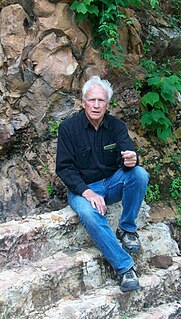 W
WRonald M. Spores is an American academic anthropologist, archaeologist and ethnohistorian, whose research career has centered on the pre-Columbian cultures of Mesoamerica. He is Professor Emeritus of anthropology at Vanderbilt University's College of Arts and Science, where he has been a faculty member for over four decades. Spores is most renowned for his scholarship conducted on the cultural history of the Oaxacan region in southwestern Mexico. In particular, he has made many contributions on the Mixtec culture, investigating its archaeological sites, ethnohistorical documents, political economies, and ethnohistory in both the pre-Columbian and Colonial eras. He was Co-Director of the Proyecto Arqueológico de la Ciudad Yucundaa Pueblo Viejo de Teposcolula, Oaxaca, sponsored by the Fundación Alfredo Harp Helu, the National Geographic Society, and INAH (2004–2010), and currently (2017) directs research on the sixteenth century Casa del Cacique de Yanhuitlan, Oaxaca, and related investigation of the surrounding Prehispanic-Colonial city and region. He is also Research Associate at the American Museum of Natural History, New York, and at the University of Oregon and investigator on the Proyecto Geoparque de la Mixteca Alta, Universidad Nacional Autónoma de México/UNESCO, centered at Yanhuitlan, Oaxaca (2016-2017). Recent research relates to the colonial Manila Galleon trade between the Philippines and Acapulco.
 W
WEphraim George Squier, usually cited as E. G. Squier, was an American archaeologist, history writer, painter and newspaper editor.
 W
WJohn Lloyd Stephens was an American explorer, writer, and diplomat. Stephens was a pivotal figure in the rediscovery of Maya civilization throughout Middle America and in the planning of the Panama railroad.
 W
WMatthew Williams Stirling was an American ethnologist, archaeologist and later an administrator at several scientific institutions in the field. He is best known for his discoveries relating to the Olmec civilization. Much of his work was done with his "wife and constant collaborator" of 42 years Marion Stirling.
 W
WEdward Herbert Thompson was an American-born archaeologist and long-time consul to Yucatán, Mexico.
 W
WGeorge Clapp Vaillant was an American anthropologist.